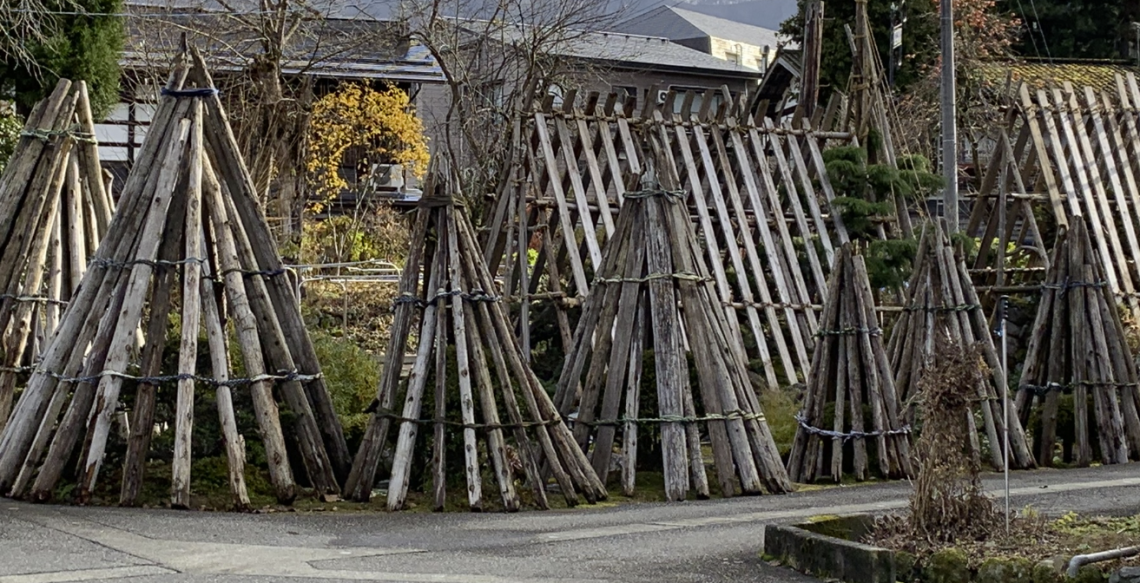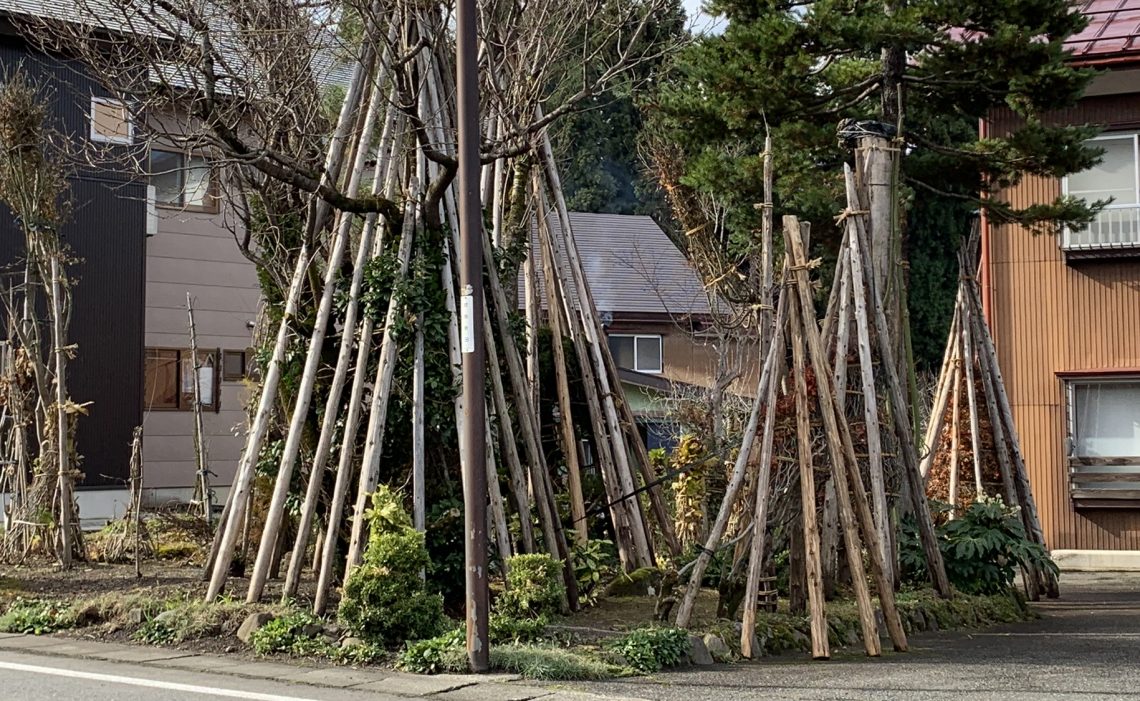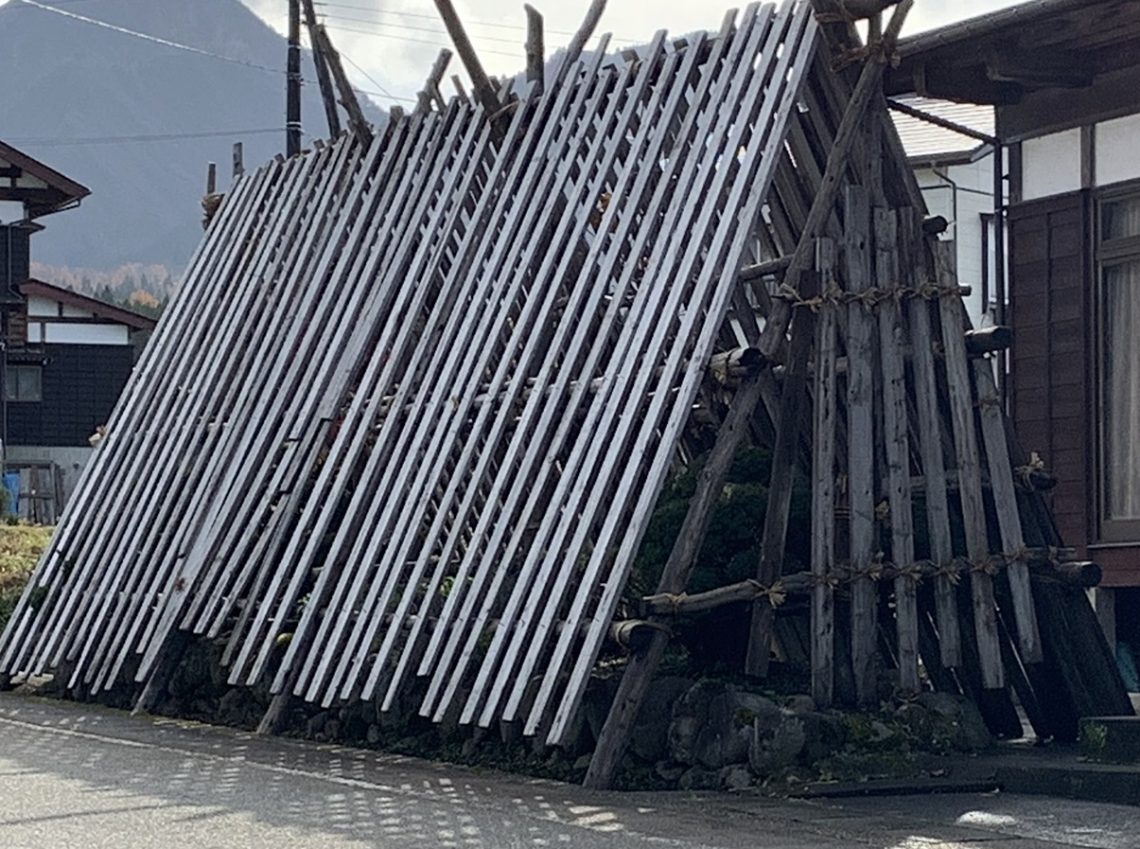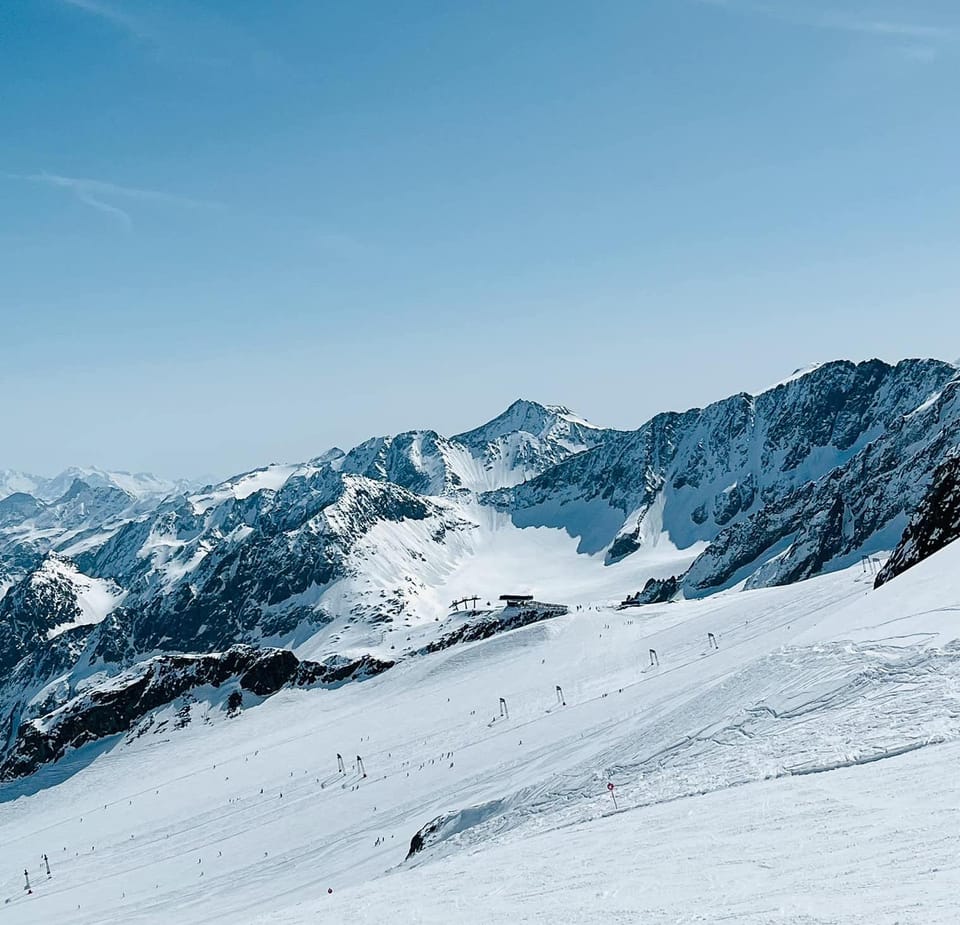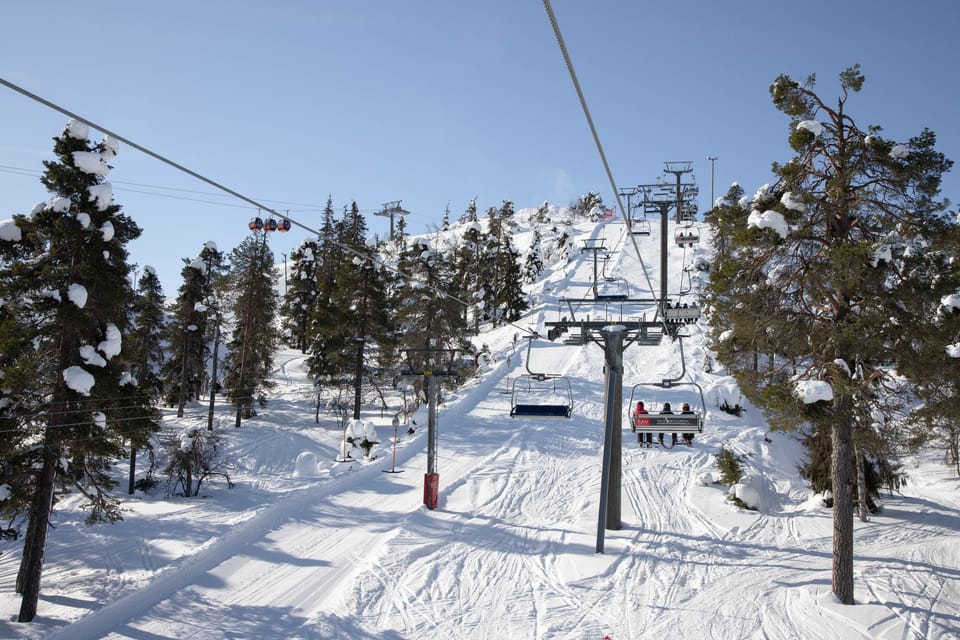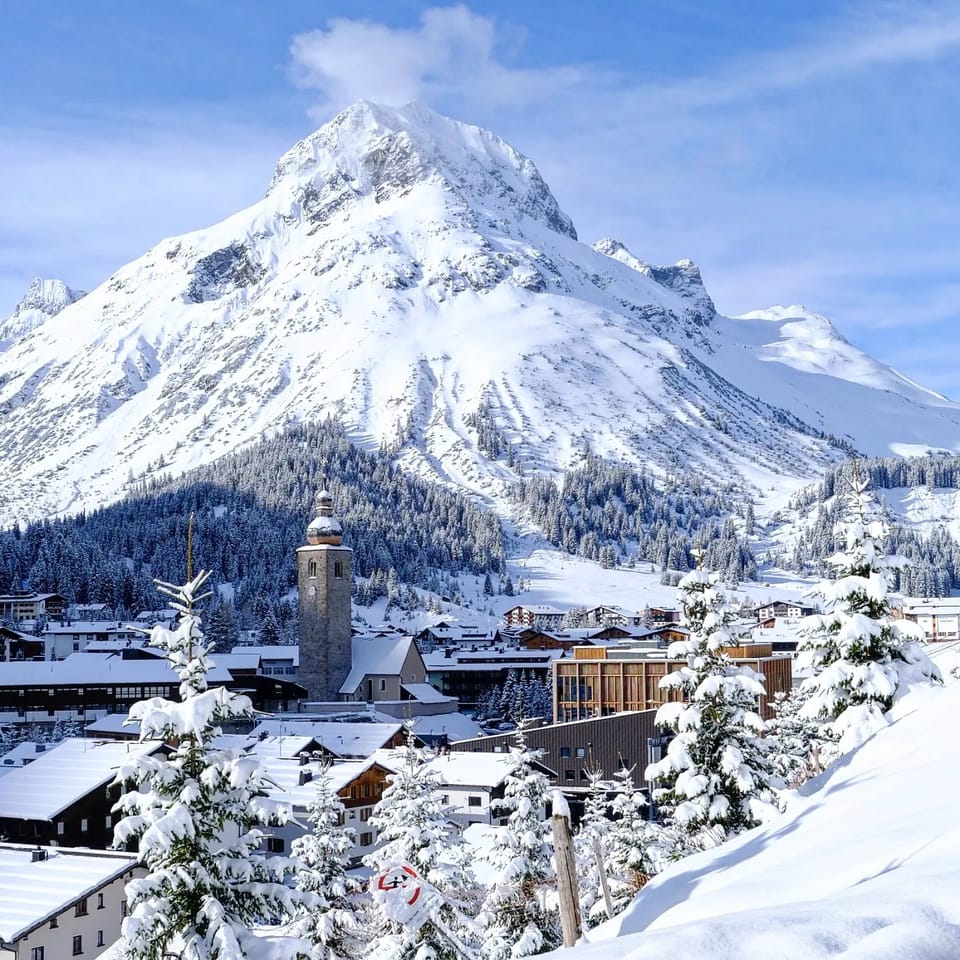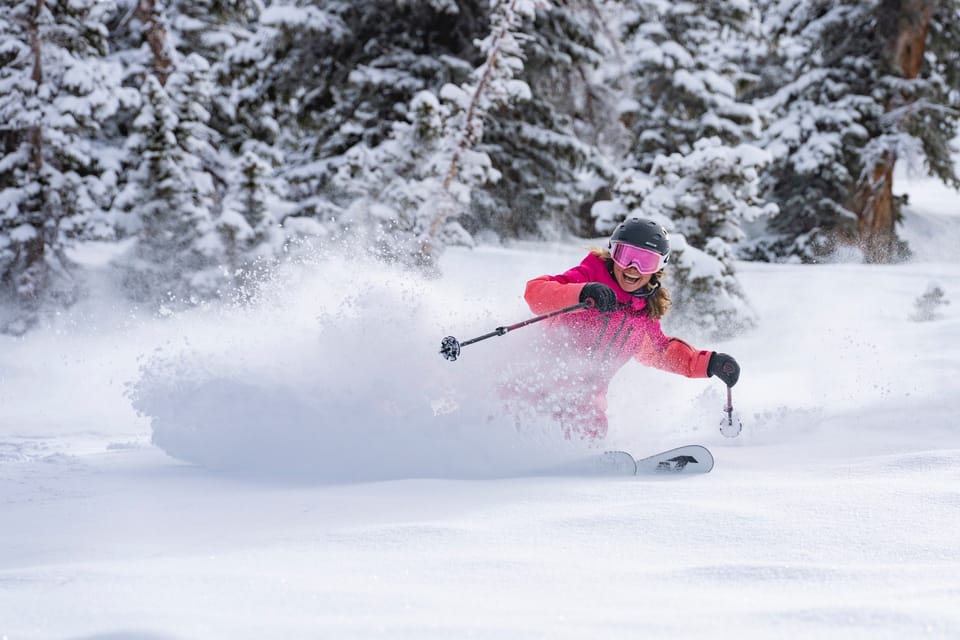Japan 2018-2019 early season

23rd November is ‘Labour Thanksgiving Day’ in Japan, or kinro-kansha-no-hi in Japanese. Various events are often held on this national holiday. Importantly for us snow lovers, it is the date when some of the major ski resorts in Japan hope to be able to open from – whatever day of the week it falls on. This year, the 23rd was a Friday, and at the time of writing that was one week ago.
Famous ski resorts in Niseko, Hakuba, Nozawa and Yuzawa (amongst others) always have the 23rd November as their planned opening date of the ski season, though in reality it is always a rather optimistic target. It is perhaps more of a marker, with that date being the earliest they will be ready to open once there is enough snow.
Last season many regions of Japan got off to a bumper start to the season with lots of early snowfall, but early on this year things are generally starting off somewhat slower. November 2018 has dealt us some unseasonably warm conditions and later-than-usual first snowfalls, meaning that many of the ski hills have had to delay opening as we still wait for the snow.
Let’s take a look at the northern island of Hokkaido, home to the popular Niseko, Furano, Kiroro ski resorts amongst others.
The cities of Wakkanai in the very northern part of Hokkaido, and Asahikawa in the central area of the island, experienced their first snowfall (‘hatsu-yuki’) on 14th November this year. That was the latest ‘hatsu-yuki’ on record for both of those locations. The latest recorded first snowfall in Sapporo, the capital city of Hokkaido, was on 20th November in the year 1890 – and this year the first light snowfall in Sapporo city was recorded on that same date. (Very glad that there wasn’t a completely new record!)
Of course, snow falling on the mountains is what matters to us the most. The first snowfall down to town in Niseko this season was on 1st November – just few cm. After that there were a few days of decent snowfall around 23rd-25th November and that was enough to allow Niseko to open some limited terrain on Saturday 24th November, one day after that proposed opening date.
For the month of November, the independent reports on SnowJapan.com have recorded 84cm of snowfall at base in Niseko. That compares with 188cm at the same point last season, 110cm the year before and 61cm the year before that. While it is difficult to make anything of such numbers at this very early part of the season, they always make for interesting reading.
https://www.snowjapan.com/japan-daily-snow-weather-reports
December is when that vast majority of the ski resorts around Japan plan to get their lifts moving, especially during the second half of the month. So, it’s very early yet! It is important for them to get open by Christmas though, and even more so by the New Year period which is one of the biggest holidays in Japan and possibly the busiest time on the slopes.
The heavy snowfall will come. Japan is well-known for large amounts of consistent snowfall and we’re all excited about what is surely now just around the corner.
With all the snowfall that many regions of Japan receive each year, many people always ask about how places cope with it all. Snow towns have fleets of all sorts of snow-moving vehicles and machines, and (in regions where temperatures allow) water is piped up from underground wells to be sprinkled onto road surfaces to melt the snow as it falls. The ‘snow walls’ that build up on the side of roads can be impressive, especially when you get to see them as high as 3 or 4 metres. Buildings in the snowiest of regions are built with snow in mind – there are regional variations, but builders must keep in mind the weight of relentless snowfall.
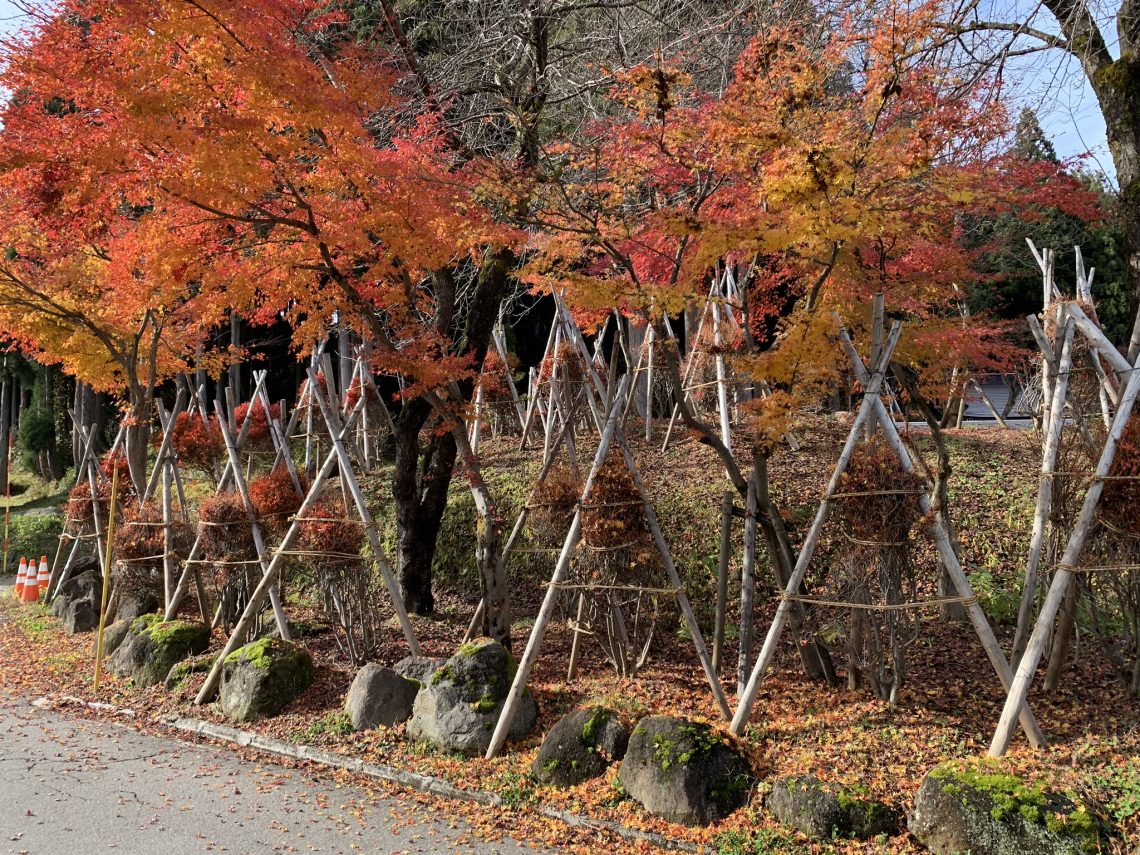
Yuki-gakoi
Another interesting sight to be seen as the winter approaches is ‘yuki-gakoi’ – I use the Japanese term because the literal translation is something along the lines of ‘snow enclosure’.
‘Yuki-gakoi’ is the way people protect trees, shrubs and bushes that might otherwise be totally crushed under the weight of the snow. Branches are bunched up together, wrapped (traditionally in straw rope) and binded, giving them a better chance of survival. Stakes and all sorts of supports are used to protect trees, some surrounded by wigwam-like wooden structures. As is so often the case in Japan, an attention to detail shines through often making them look artistic as well as beautiful. It’s easier to see than explain, so here’s a few examples of yuki-gakoi…
Hopefully by the time my next article appears those trees will be largely under deep snow and we’ll all be skiing and boarding. See you then.
